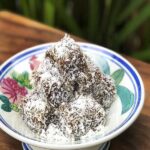Italian cuisine is known for its vibrant flavors and focus on fresh ingredients. But sometimes, a dish needs a little extra kick. That’s where chili oil comes in! This fiery condiment adds a touch of heat and depth to everything from pizza to pasta to grilled vegetables.
Making your own chili oil at home is surprisingly easy, and the results are far superior to store-bought varieties. You can control the level of spice, customize it with your favorite herbs, and enjoy the satisfaction of creating a delicious condiment from scratch.

This article will guide you through the process of making Italian chili oil, from gathering the ingredients to storing your fiery creation. So, grab your apron, and let’s get cooking!
Ingredients:
The Spice Essentials:
1 cup high-quality extra virgin olive oil
Flavor Boosters (Optional):
1 clove garlic, thinly sliced
Directions:
Infusing the Oil:
1. Gently heat the olive oil: In a small saucepan, heat the olive oil over low heat. You don’t want the oil to get too hot, just warm enough to simmer gently.
2. Add the dried red pepper flakes: Once the oil is warm, add the dried red pepper flakes. Swirl the pan gently to coat the flakes in the oil.
3. Toast and infuse: Let the mixture simmer for about 5-7 minutes, stirring occasionally. You’ll see the red pepper flakes darken slightly and release their fragrant aroma. This is where the magic happens – the oil infuses with the chili flakes’ flavor and heat.
4. Spice control: If you prefer a milder oil, remove the pan from the heat at this point. For a spicier kick, let the mixture simmer for a few more minutes, keeping a close eye to avoid burning the flakes.
5. Flavor Boost (Optional): If using any of the optional flavor boosters, add them to the oil at this point. Garlic can be added whole or sliced, depending on your preference for a stronger or milder garlic flavor. Fresh herbs like rosemary and bay leaf add a subtle complexity, while oregano brings a touch of earthiness. Let the oil simmer for an additional minute or two to allow these additional flavors to infuse.
Cooling and Storing:
1. Let it cool: Once you’ve achieved your desired level of heat and flavor, remove the pan from the heat and let the oil cool completely. This is important to avoid scorching the jar and compromising the oil’s quality.
2. Strain (Optional): If you prefer a smoother oil, you can strain the chili flakes and other flavorings out using a fine-mesh sieve. However, many people enjoy the subtle crunch of the red pepper flakes in the finished oil.
3. Bottle it up: Pour the cooled chili oil into a clean, airtight glass jar.
4. Storage: Store your homemade chili oil in a cool, dark place, like a pantry. It will keep for several months, but the flavor will be most intense in the first few weeks.
Nutrition Facts (Approximate per 1 tablespoon):
Calories: 120
Please note: This is a general estimate, and the exact nutritional content will vary depending on the type of olive oil and chili flakes used.
Conclusion:
Homemade Italian chili oil is a versatile condiment that can elevate your everyday dishes. From drizzling it over pizza and pasta to adding a spicy kick to soups, stews, and marinades, the possibilities are endless. It’s a simple recipe that yields a flavorful and customizable condiment you’ll be proud to have on hand. So, ditch the store-bought stuff and whip up a batch of your own fiery creation today!
Frequently Asked Questions (FAQs):
1. What type of olive oil should I use?
High-quality extra virgin olive oil is best. It has a richer flavor and higher smoke point than other types of olive oil, making it ideal for infusing with chilis.
2. Can I use fresh chili peppers instead of dried flakes?


